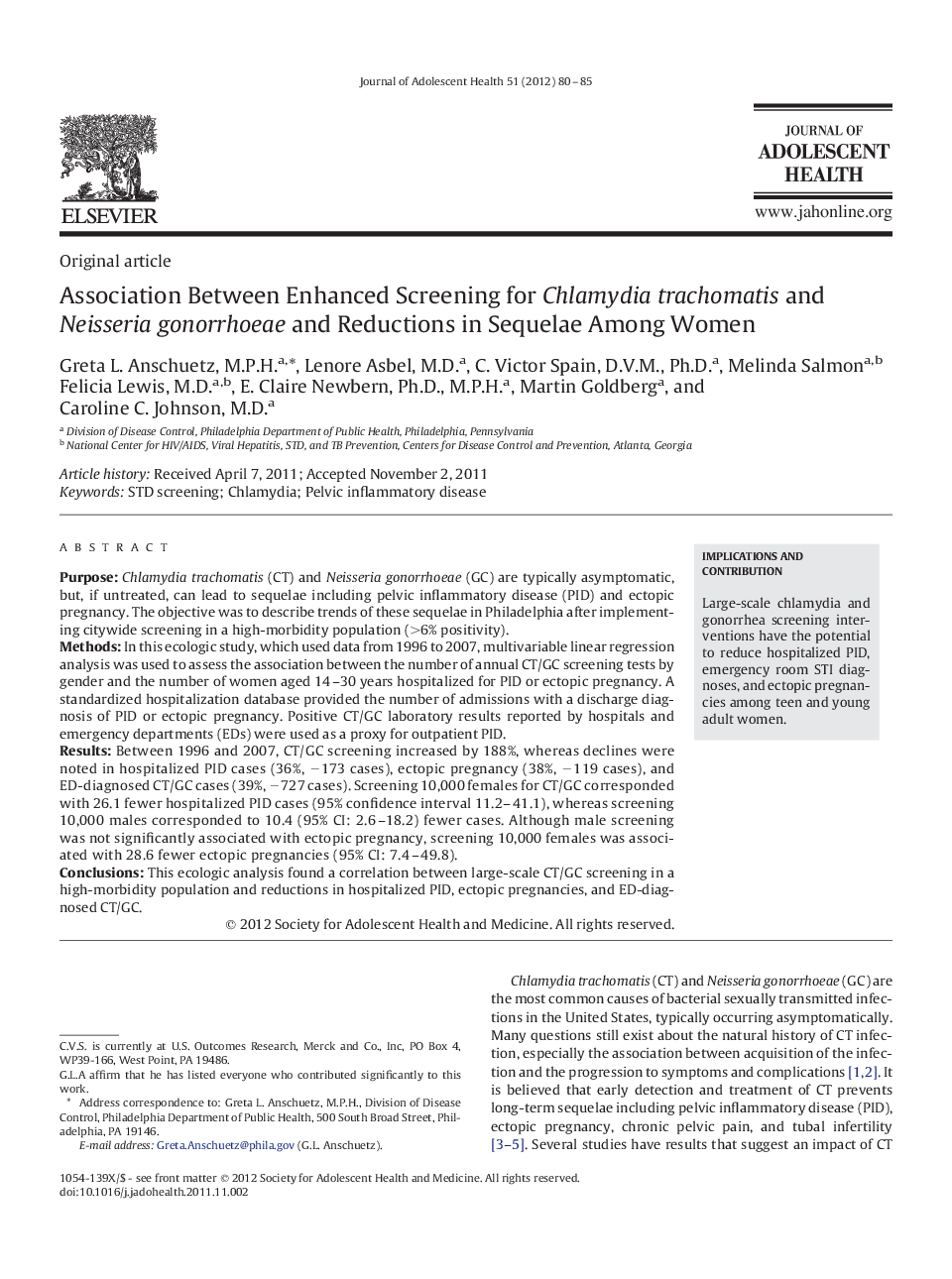| Article ID | Journal | Published Year | Pages | File Type |
|---|---|---|---|---|
| 1079512 | Journal of Adolescent Health | 2012 | 6 Pages |
PurposeChlamydia trachomatis (CT) and Neisseria gonorrhoeae (GC) are typically asymptomatic, but, if untreated, can lead to sequelae including pelvic inflammatory disease (PID) and ectopic pregnancy. The objective was to describe trends of these sequelae in Philadelphia after implementing citywide screening in a high-morbidity population (>6% positivity).MethodsIn this ecologic study, which used data from 1996 to 2007, multivariable linear regression analysis was used to assess the association between the number of annual CT/GC screening tests by gender and the number of women aged 14–30 years hospitalized for PID or ectopic pregnancy. A standardized hospitalization database provided the number of admissions with a discharge diagnosis of PID or ectopic pregnancy. Positive CT/GC laboratory results reported by hospitals and emergency departments (EDs) were used as a proxy for outpatient PID.ResultsBetween 1996 and 2007, CT/GC screening increased by 188%, whereas declines were noted in hospitalized PID cases (36%, −173 cases), ectopic pregnancy (38%, −119 cases), and ED-diagnosed CT/GC cases (39%, −727 cases). Screening 10,000 females for CT/GC corresponded with 26.1 fewer hospitalized PID cases (95% confidence interval 11.2–41.1), whereas screening 10,000 males corresponded to 10.4 (95% CI: 2.6–18.2) fewer cases. Although male screening was not significantly associated with ectopic pregnancy, screening 10,000 females was associated with 28.6 fewer ectopic pregnancies (95% CI: 7.4–49.8).ConclusionsThis ecologic analysis found a correlation between large-scale CT/GC screening in a high-morbidity population and reductions in hospitalized PID, ectopic pregnancies, and ED-diagnosed CT/GC.
